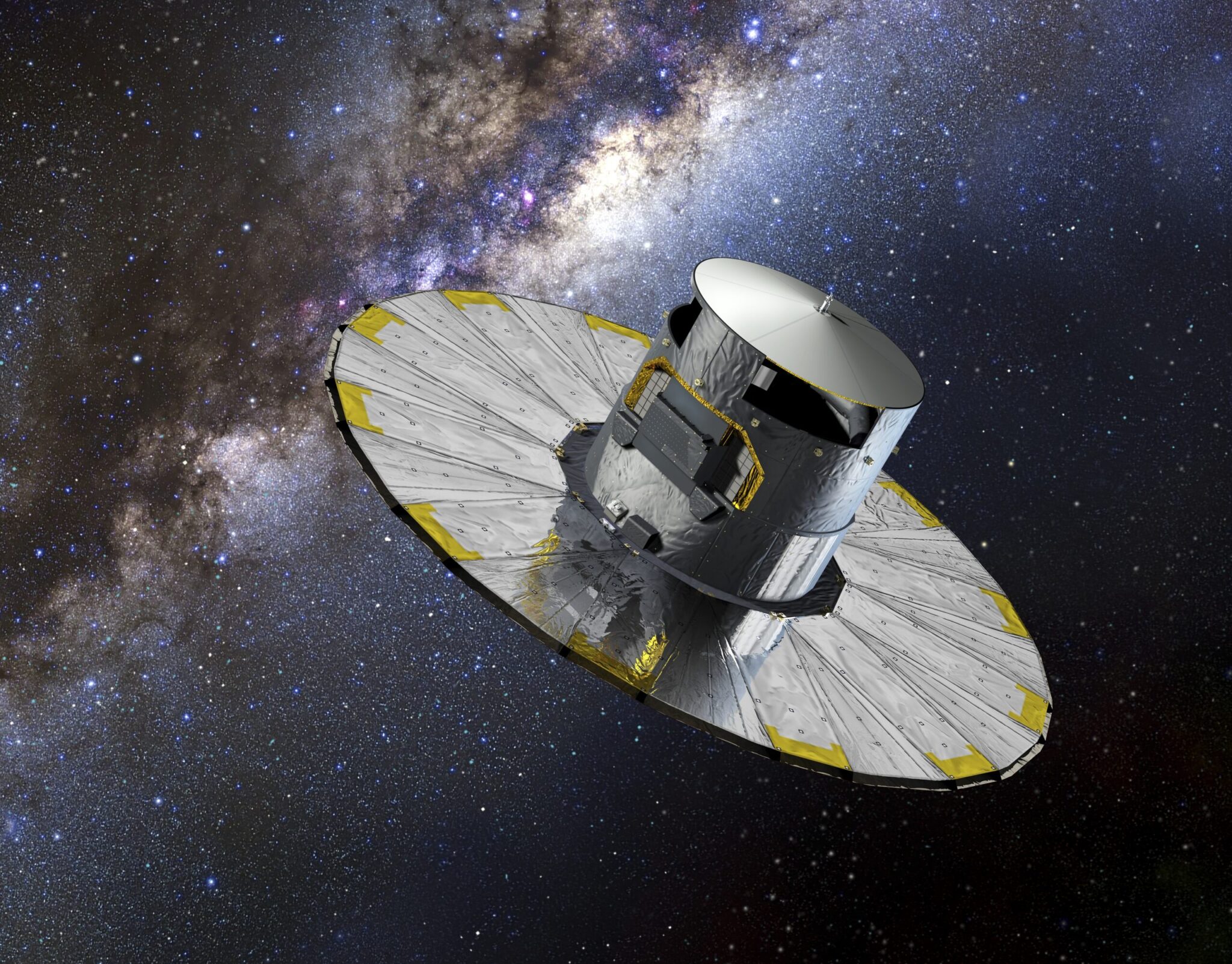Sitges brings together over a hundred scientists at the second congress of the Gaia data processing and analysis consortium [NOT TRANSLATED]

Artist_s_impression_of_Gaia
During these days, scientists will share and analyse the first Gaia mission data, made public last September 14, which allowed us to obtain the most accurate map of the sky so far with more than one billion stars. Scientists will review Gaia’s first scientific results as well as the preparation of the second data publication.
About Gaia mission
Gaia bases on the proven principles of ESA’s Hipparcos mission to help solve one of the most difficult but deeply fundamental challenges of modern astronomy: creating an extraordinarily accurate three-dimensional map of a billion stars throughout of our galaxy and beyond.
This massive stellar census will provide the basic observation data to address a huge range of important phenomena related to the origin, structure and evolutionary history of our galaxy.
The Gaia mission will deliver a catalogue and archive of astronomical data of unprecedented scope, accuracy and integrity.
Participation of the Barcelona team
The team of Institute of Cosmos Sciences (IEEC-UB), led by Professor Jordi Torra, from the Department of Quantum Physics and Astrophysics and Director of the IEEC, has participated in the Gaia mission from the very beginning with an outstanding role. They contributed to the scientific and technologic design, plus the database prototypes and data simulation production during the preparation stages of the mission.
Regarding the first data released, the team from Barcelona leads the group that works on the creation of the mission archive. They are also in charge of launching the initial process for the treatment of the data that arrive daily to the satellite, the first step to obtain scientific results such as the ones published. The team is responsible for the matching of several observations in the same star and collaborates in the calibration of the stars brightness.
It is also worth mentioning that Barcelona is the headquarters of one of the data processing centres of the mission, in which there are Consorci de Serveis Universitaris de Catalunya (Consortium for University Services of Catalonia; CSUC) and Barcelona Supercomupting Center (BSC). This centre provides with the resources to carry out a part of the operations during the mission and it was essential in the preparation and verification tasks, as well as data simulation.
Around twenty scientists and engineers make the Gaia-ICCUB/IEEC team. It is built into the Data Processing and Analysis Consortium (DPAC), which gathers more than 400 people from around twenty European countries.
Tou can see the program here: http://icc.ub.edu/congress/dpac2017/ [NOT TRANSLATED]
